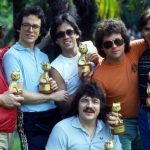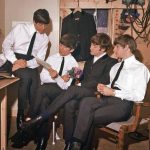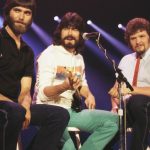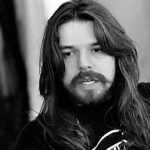The Beatles – Flying

“Flying,” an often-overlooked gem from The Beatles’ 1967 album “Magical Mystery Tour,” stands out as the band’s first instrumental track to appear on a studio album. Composed by all four members—John Lennon, Paul McCartney, George Harrison, and Ringo Starr—this psychedelic instrumental piece reflects the experimental spirit and innovative approaches that defined The Beatles’ late 1960s work.
“Flying” was originally titled “Aerial Tour Instrumental” and was conceived as incidental music for the “Magical Mystery Tour” film. The track is unique within The Beatles’ discography, as it is the only composition credited equally to all four members. This collaboration underscores the band’s collective creativity during a period of intense artistic exploration.
Musically, “Flying” is a minimalist piece built around a repeating, dreamy motif. The track begins with a mellow, bluesy melody played on Mellotron, an early synthesizer popularized in the 1960s for its ability to replicate orchestral sounds. The use of the Mellotron, played by Lennon and McCartney, sets a distinctly ethereal tone, evoking a sense of weightlessness and drifting through space.
The instrumentation is relatively sparse but effective, featuring Harrison on guitar, McCartney on bass, Starr on drums, and additional layers of sound created by the Mellotron. The simple, repetitive structure of the piece allows the musicians to explore texture and atmosphere, rather than focusing on complex harmonic or melodic development. This emphasis on mood and ambiance is a hallmark of the psychedelic music of the era.
A key element of “Flying” is its use of tape loops and backward recordings, techniques The Beatles had begun to experiment with on previous albums such as “Revolver” and “Sgt. Pepper’s Lonely Hearts Club Band.” These effects contribute to the track’s otherworldly quality, creating a soundscape that feels both familiar and alien. The use of reverse tapes adds an unpredictable, swirling dimension to the music, enhancing the sense of floating or flying.

The track’s arrangement is subtly dynamic, with gradual shifts in instrumentation and intensity. The melody is simple yet hypnotic, drawing the listener into a meditative state. The repetitive nature of the piece is not monotonous but rather soothing, inviting the audience to lose themselves in the gentle ebb and flow of the music.
“Flying” also features vocalizations from The Beatles, though not in the form of traditional lyrics. Instead, the band members provide a series of harmonized “la-la-las” that blend seamlessly with the instrumental backdrop. These vocalizations add a human element to the otherwise instrumental track, further enhancing its dreamy, whimsical quality.
The visual counterpart to “Flying” in the “Magical Mystery Tour” film complements the song’s ethereal nature. The sequence features aerial shots of landscapes, giving viewers the sensation of gliding over the earth. This imagery aligns perfectly with the music’s floating, dreamlike vibe, creating a cohesive audiovisual experience.
While “Flying” may not be as widely known as some of The Beatles’ other work, it remains an important piece within their catalog. The track exemplifies the band’s willingness to experiment and push the boundaries of popular music. It also highlights their ability to create evocative, mood-driven pieces that transcend traditional song structures.
In conclusion, “Flying” is a unique and enchanting track that captures The Beatles at their most experimental and collaborative. Its blend of simple melodies, innovative production techniques, and atmospheric soundscapes make it a standout piece on the “Magical Mystery Tour” album. As an instrumental journey, “Flying” invites listeners to experience the sense of freedom and exploration that defined The Beatles’ music during this groundbreaking period in their career. Through its hypnotic rhythms and ethereal textures, the song continues to inspire and captivate, serving as a testament to The Beatles’ enduring legacy of creativity and innovation.











